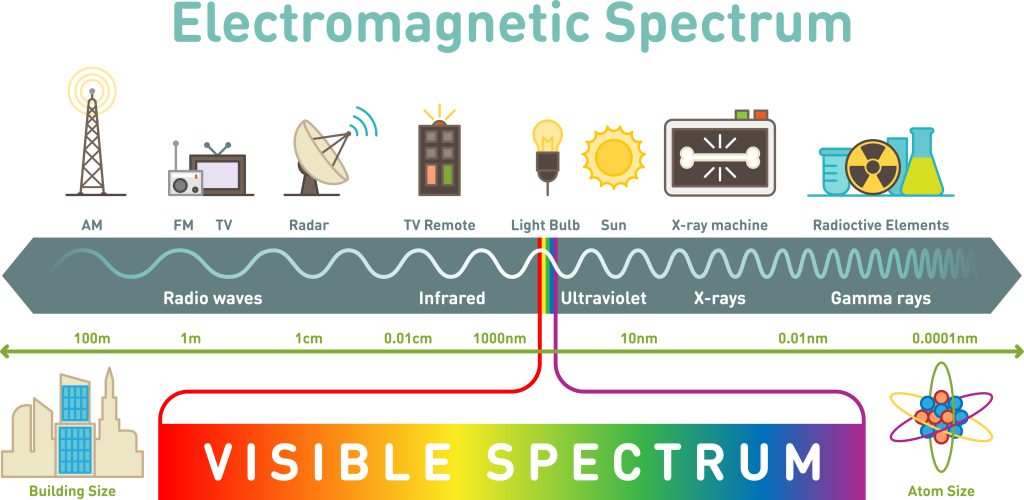Radiation physics featured in the second workshop of my new Irish-school based project ‘Exploring the Physics of Superheroes’.
Over the last 20 months or so, Disney+ has released a number of new superhero TV series as part of Phase 4 of the Marvel Cinematic Universe. There’s been the massive worldwide hit WandaVision, the Christmas-themed Hawkeye, and the psychological thriller-esque Moon Knight. The latest TV series offering is She-Hulk: Attorney at Law, which brings the superhero world into the courtroom where some of those with superpowers have to answer for some of their superhero escapades.
In the series, She-Hulk (whose real name is Jennifer Walters) is the cousin of a certain Bruce Banner – the same Bruce Banner who gains the ability to turn into the Hulk in the MCU after a mishap involving a gamma radiation-based treatments. After a serious car accident, some of Banner’s blood ends up in Walters’ body. The gamma radiation in Banner’s blood instantly changes the cells in Walters’ body, with the end result being that she can turn into a giant, super-strong green Hulk-like being.

The media dubs Jennifer Walters the ‘She-Hulk’, and even though Walters now has superpowers, it doesn’t stop her fulfilling her job as a lawyer. She does temporarily lose her job as a lawyer after revealing to the world that she has Hulk abilities during a court case. However, she’s quickly rehired by another firm, who ask her to lead a new division in the law firm that focuses on cases involving those with superpowers.
She-Hulk origins: What is gamma radiation?
Let’s not get bogged down in the legal ramifications of having superpowers here. Instead, I’m going to look at the physics behind She-Hulk’s green abilities. So, it’s time for some gamma radiation chat. Can gamma radiation give you superpowers?
This is the main questions that I answered for the third workshop of my new superhero education project ‘Exploring the Physics of Superheroes’, a project delivered in collaboration with Midlands Science and funded by the Institute of Physics Ireland.
The gamma radiation behind the transformation of Banner and Walters is a form of electromagnetic radiation. This doesn’t mean that it’s the same as radioactivity, but the terms are related.
Radioactivity concerns the spontaneous emission of energy in the form of radiation or high-energy particles by unstable atoms. Classic examples of such unstable atoms are isotopes of elements like plutonium, uranium, and polonium. By the way, an isotope is a version of an element that has more or less neutrons in its nucleus in comparison to the most stable version of the element. For instance, the most stable version of carbon is known as carbon-12, and it has 6 neutrons and 6 protons in the nucleus. However, carbon-14 has 8 neutrons and 6 protons in its nucleus, which makes it quite unstable and a radioactive isotope for that matter.
On the other hand, radiation is the stuff that can be emitted by unstable atoms on their journey to becoming stable atoms, for instance. But different types of radiation are created in different ways. So, IF gamma radiation (or gamma rays) is a form of electromagnetic or EM radiation, This means that there are others? So, what are they?

Well, there’s a whole bunch, and they’re collected neatly together on the electromagnetic spectrum. There’s radio waves, microwaves (which can be classified as a form of radio waves too), infrared, visible light, ultraviolet radiation, X-rays, and gamma rays. Some forms of EM radiation carry more energy than others. For example, gamma rays carry the most energy, while radio waves carry the least amount of energy. There are a lot of important attributes about the different types of EM radiation that could be discussed here. However, I’m going to limit myself to looking at five key facts about the electromagnetic spectrum.
Five facts about the Electromagnetic Spectrum
There’re plenty of confusion about some of the different types of radiation, so here’s five key facts to set the record straight.
- All radiation types are natural. This means that somewhere in the universe right now all of the radiation types are being produced by natural processes. They could be produced inside stars or as material travels close to black holes. Some of them are produced when stars die in supernova explosions. And some of them are produced as black holes collide with each other. The main take-away here is that none of them are artificial. So just to repeat – no radiation type is artificial.
- Some radiation types are safe. These are known as forms of non-ionising radiation, which means that when they interact with atoms, they don’t remove electrons from the orbits of atoms. For example, our eyes contain detectors for light. In other words, these detectors are designed to measure light and use the electrical signals created to enable vision. If the intensity of the light is too high though it can damage parts of the eye. The radiation types that can remove electrons from atoms are the high-energy radiation types (such as ultraviolet radiation, X-rays, and gamma radiation), and they are known as ionising radiation. It can be very dangerous to be exposed to uncontrolled doses of any of these radiation types. In medical treatments, some of these are used in controlled and targeted ways to kill diseased cells so that inadvertent exposure of healthy cells to the radiation is avoided. In summary, while ionising radiation can be used to fight disease, these are also the ones that can cause the most damage to healthy parts of the human body too.
- 5G is a form of radio waves. Simple as that. When you talk about 5G, you’re talking about radio waves. And radio waves are non-ionising forms of radiation, which means they don’t remove electrons from atoms.
- There are radio waves passing through your body right now, some of them from outer space, some of them from radio signals for radio stations, and some are from your WiFi in your house. And this counts for other forms of electromagnetic radiation too. Yes, no matter where you are right now, there are electromagnetic waves passing through, bouncing off, or being absorbed by your body right now.
- Your skin can burn on a cloudy day. That’s because ultraviolet radiation that is not blocked by the ozone layer can pass through clouds. So, be sure to wear sun protection, even on a cloudy day. Of course, sun protection is not necessary when it is night time.

She-Hulk powers: Highly unlikely
With all of this taken into account, what are the chances that you would gain Hulk-like superpowers if you were exposed to gamma radiation. I’ve got to be bringer of bad, yet important news on this. It’s highly unlikely that gamma radiation would give you the powers of She-Hulk. Instead, it’s more likely that exposure to gamma radiation in an uncontrolled non-medical setting would permanently damage cells in your body. It’s quite likely that it would result in diseases like cancer to be honest.
Of course, depending on the dose, a person could die soon after too. Put simply, avoid the temptation of exposing yourself to unregulated doses of gamma radiation in the pursuit of superpowers – it’s just not going to work.
So, for those dreaming of becoming like She-Hulk or the Hulk, I’ve got nothing but bad news for you. But it’s also good news, because you’ll avoid the temptation to mess around with gamma radiation in the first place. I hope so anyway.
Nevertheless, ionising radiation types will continue to play a key role in society, particularly in healthcare. We may not be able to harness these radiation types to create superheroes, but we can harness the superpower of these radiation types to treat people with serious illnesses. And I think that’s more than super-enough!
About ‘Exploring the Physics of Superheroes’
‘Exploring the Physics of Superheroes’ is a new outreach project which allows students to experience the excitement of superheroes whilst learning about the physics that make such stories possible. The project is managed by Midlands Science and delivered by physicist Dr. Barry Fitzgerald (BW Science and The Superhero Scientist), who has done extensive research in this area. The project is supported by the Institute of Physics, whose Limit Less campaign aims to support young people to change the world by doing physics.

